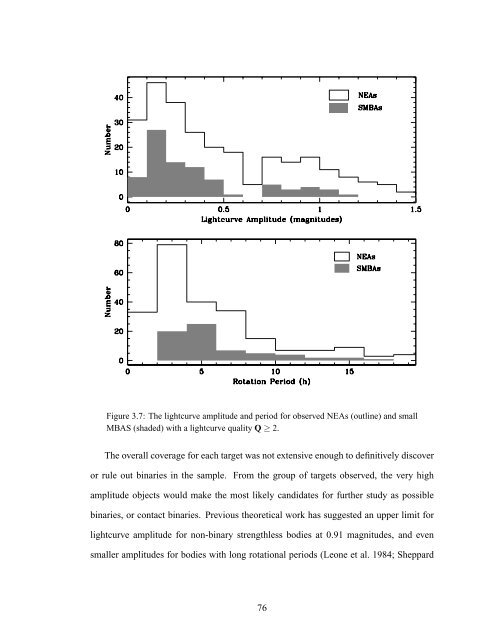Forming Binary Near-Earth Asteroids From Tidal Disruptions
Forming Binary Near-Earth Asteroids From Tidal Disruptions
Forming Binary Near-Earth Asteroids From Tidal Disruptions
You also want an ePaper? Increase the reach of your titles
YUMPU automatically turns print PDFs into web optimized ePapers that Google loves.
Figure 3.7: The lightcurve amplitude and period for observed NEAs (outline) and smallMBAS (shaded) with a lightcurve quality Q ≥ 2.The overall coverage for each target was not extensive enough to definitively discoveror rule out binaries in the sample. <strong>From</strong> the group of targets observed, the very highamplitude objects would make the most likely candidates for further study as possiblebinaries, or contact binaries. Previous theoretical work has suggested an upper limit forlightcurve amplitude for non-binary strengthless bodies at 0.91 magnitudes, and evensmaller amplitudes for bodies with long rotational periods (Leone et al. 1984; Sheppard76












